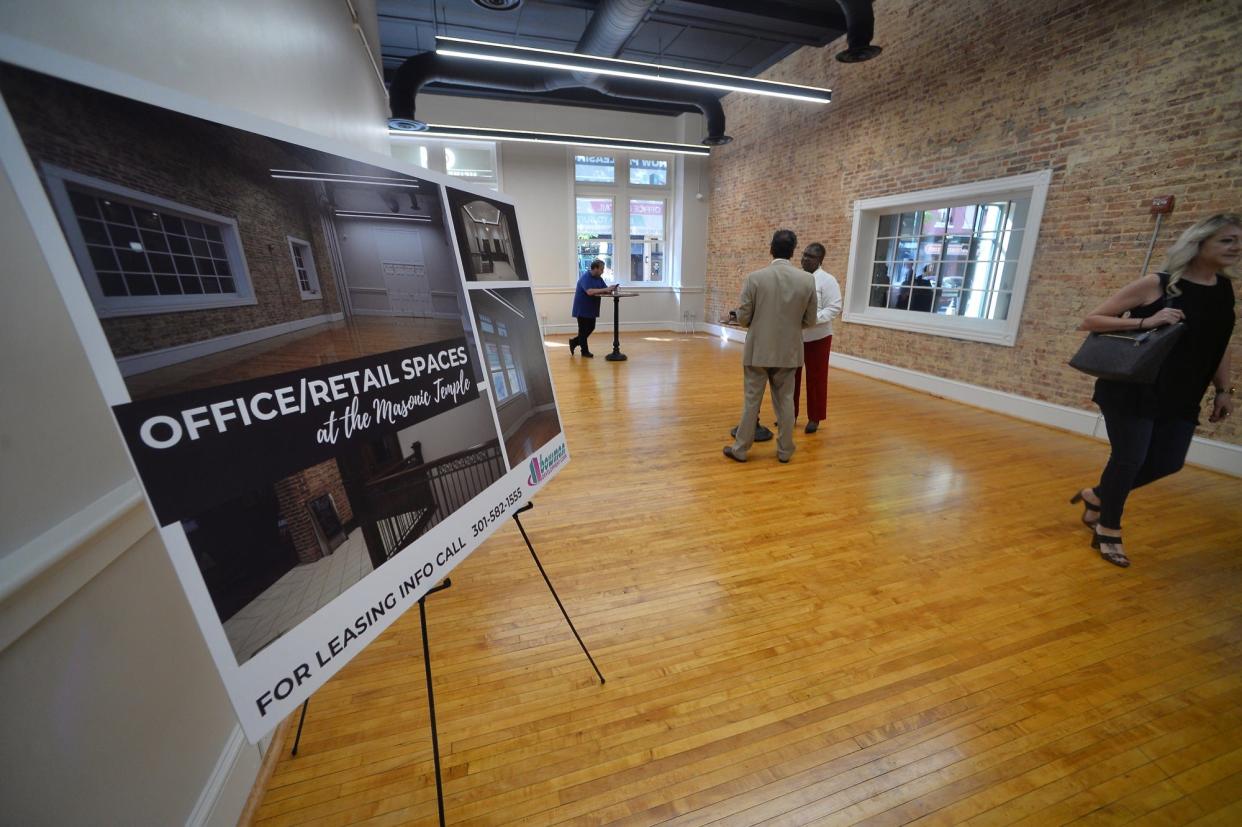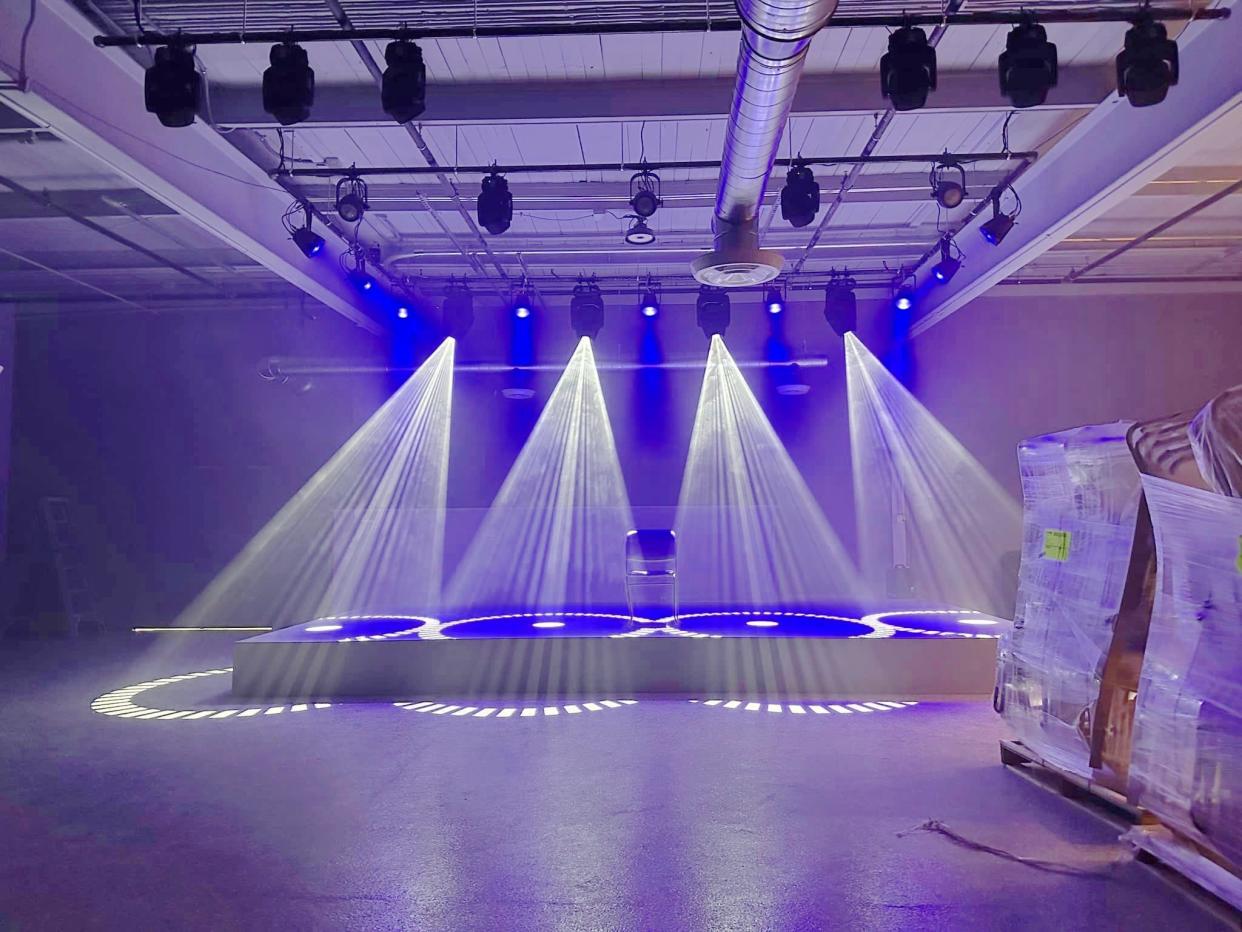These Washington County developers are putting old buildings back to work.
Editor's note: This is the fifth in a series of stories looking at the growth and development in Washington County over the past few years, answering the question "Why now?"
Since becoming Washington County's business development director about a year ago, Jonathan Horowitz has fielded his share of complaints about the number of warehouses that have sprouted up near Interstates 81 and 70.
But Horowitz told The Herald-Mail that nearly half of the county is still agricultural, and that most of the open land that was zoned for commercial/industrial development has been spoken for.
His office, therefore, is turning its attention to "adaptive re-use" of existing facilities for new business.
That's already happening in some of the county's municipalities and communities. Hagerstown has had rehabilitation incentives in place for several years, and redevelopment by the women of Port 44 in Williamsport has already resulted in several new businesses in the town's core. Similarly, Ritchie Revival has brought about a dozen businesses to the former U.S. Army installation in Cascade.
In fact, many of the development projects now underway involve the rehabilitation of older buildings. As Washington County Museum of Fine Arts Director Sarah Hall discussed plans to convert the former Bock Oil buildings on Key Street into an arts education campus, she quipped that trustee Roger Fairbourn had familiarized her with the term "industrial chic."
She told The Herald-Mail last spring that discussions of expanding the museum, put on hold during the pandemic, had quickly resurfaced because of "the sort of renaissance that's happening in Hagerstown."
That renaissance can be traced, perhaps, to the decision to put a University System of Maryland center in downtown Hagerstown.

The state purchased the vacant Baldwin House on West Washington Street in 2001 and renovated it for the Hagerstown campus.
Two years later, the late Vincent Groh donated the former Henry's Theater on South Potomac Street to the Washington County Board of Education for an arts school.
The University System of Maryland at Hagerstown opened in 2005, and at about that time, local businessman and developer Don Bowman put his faith — and some pretty serious investment — in some South Potomac Street properties that needed attention.
Bowman's project was designed to clean up and renovate these structures even though downtown Hagerstown was a target of derision for many. Bowman told The Herald-Mail then that he was helping to rehabilitate that block because the community had been good to him, and he wanted to give something back.
Bowman Development hoped those projects would be a catalyst for further revitalization efforts, as did other developers with interests downtown. But the economic downturn in 2008 dampened those prospects, even as the Barbara Ingram School for the Arts opened across the street in 2009.
But there are no regrets, according to Bowman Development President Rob Ferree. Since then, the company has added to its downtown holdings and recently completed renovation of the Masonic Temple building in the same block.
There's still space available for tenants, Ferree said, and for now, the company is waiting for those spaces to fill — and to see how other projects now in the works downtown proceed — before moving ahead with new projects of its own.
They might not have to wait long.
Because post-recession and post-pandemic, it's become hip to invest in downtown Hagerstown.
"To me, this town was the land of opportunity, because everything was so inexpensive compared to where I came from," said Lloyd Thoburn, a Montgomery County-based developer who's been rehabilitating buildings here for about 20 years.
"A person who wasn't rich could buy buildings and fix them up and lease them. That's kind of my schtick, is buying and fixing them up."
Something old, something new …
Adapting older buildings for new uses has benefits in terms of preserving historic architecture and taking advantage, in many cases, of existing infrastructure. Tax credits are often available for renovating older buildings as well.
"The two biggest things would be, one, you can get those buildings for much less money and then buy them for much less money, and then renovate them for less than building something new," said Aaron Peteranecz, a developer and architect who, with his father, renovated Mulberry Lofts and is involved in a number of other Hagerstown projects. "And Hagerstown has enough buildings that are of a substantial size that it's worth doing … so adaptive reuse is … cost effective in Hagerstown."
And while Peteranecz said he doesn't take advantage of them much, "there are tax incentives and grant programs and all sorts of things that allow for those numbers to look even better."
There are hurdles as well, notes Port 44 CEO Selena Wilkes. There are permits to secure from different local government agencies that are "not on the same timeframe; that takes time," she said.
"Some of the buildings require structural work," she added, and completing a project for renting to other businesses means "working with each individual tenant and what their needs are."
Port 44's buildings "are ready … for the actual build-out," she said. "We're just waiting on one of those components. And all of them are different.
"From my end of it, it can be very frustrating. But I've learned that you can't let it get to you."
Peteranecz agreed.
"You have to work within the confines of whatever that building is," he said, "and so if you're starting with a factory that was built in the early 1900s, and you want to have, you know, doctors offices, you can't just start with a blank slate an create doctors offices.
"You have to find a way to make make the existing building work with the use. You're dealing with existing structure, and that has code implications — you have to sprinkler it, are you changing structure, you're adding electric and plumbing to things that are all old … it is a much different process than new construction. To do it well, you have to sort of have practiced," he said.
In 2015, Ewing Oil CEO Howard "Blackie" Bowen and his son, Realtor Taylor Bowen, renovated the former Patterson Hotel at North Potomac and East Franklin streets to apartments for USMH students.
"When we dealt with the renovation for where the student housing is, we thought we were gonna have a challenge," Blackie Bowen said. "And it turned out to be even more of a challenge than we thought."
He said the interior was stripped all the way to the brick walls. "Basically, we started from scratch," he recalled. "Now oftentimes, you don't have to go that far."
But in renovating the Port 44 buildings, Wilkes sometimes did.
"It's not really a problem, it's just an added step," she said before describing the challenges of renovating buildings to which additions were made in different time periods. Previous improvements often had to be removed, but beneath them was historic handiwork waiting to be rediscovered.
Some of the older Port 44 buildings had large beams — with lines of bricks between them. "We repointed those bricks because that's the way it was, whether it was technically correct or not," she said.
It's visible in several of the buildings, she added, because "we had to open it all up because of the fire regulations. But we're able to display small sections of it so people can actually see it."
How long will these opportunities be available?
According figures provided by Hagerstown Director of Community Development Jill Thompson, recently completed or planned development of residential units downtown accounts for more than $64.5 million in investments in 18 different projects.
These include the renovation of the Nicodemus Building at 170 W. Washington St. to include nine student housing units, the nearly completed development of 21 market-rate apartments in the Updegraff Building at 51-53 W. Washington, and the planned 43 units in the Holly Building at 72 W. Washington.
All of these projects include commercial space on the first floor.
With the added amenities of the new stadium under construction downtown, the planned field house on the former Municipal Stadium site on Memorial Boulevard and the planned Meritus Osteopathic School of Medicine, however, some developers say the building bargains are beginning to dwindle.
"I think that there are now people coming in that are interested in investing in Hagerstown … and so as Hagerstown becomes more of a target for development, we tend to migrate away," Peteranecz said. "What happened with Frederick, that's why we're in Hagerstown — because Frederick became too cumbersome for our model."
Not that he's finished with Hagerstown. Peteranecz's companies have the former Post Office on Summit Avenue, where a new cocktail lounge recently opened, and the former Moller Organ building and the former Beachley Furniture building on North Prospect, as well as others.

Thoburn also has several holdings in Hagerstown, including 28 E. Baltimore St. — home of Hub City Vinyl, the record store run by his wife, which has been a runaway success.
Now the building is being renovated to include two performance venues, the smaller of which is opening this month.
"I've learned a lot doing buildings in this town," he said during an interview in the Hub City office, "and it's expensive. But like this building, when we first did it, we spent about a million bucks. So now with the venue, you know, we're gonna have a couple million dollars invested here, which on Baltimore Street is still … I am still a pioneer.
"But when we did the record store, we had no idea the stadium was going to come in. So that certainly helped."
While there still are buildings that can be renovated, "the deals in this town have dried up," he added. "There were so many cheap buildings. I'm ambitious, but I wish I'd been more ambitious. Because the opportunities just were incredible."
But Wilkes has some advice for those still wishing to cash in.
The redevelopment in Hagerstown "I think is wonderful," she said. "But my point was let's not forget the towns …. Hagerstown has always been the Hub City; it's the hub for a reason. I think today, the way things work with different tourist areas and all, every town has their thing."
Next week: How will Washington County manage the challenges that come with growth?
Previously: Have you noticed all the new development in Washington County? There's a reason for it
Starting at the core: How one big venture reflected a sea change for downtown Hagerstown
New factory, med school and stadium: Why are these projects 'game-changers' in Hagerstown?
Port 44 and Ritchie Revival: Can targeted determination help rejuvenate communities?
This article originally appeared on The Herald-Mail: How entrepreneurs are rejuvenating old structures in Washington County
